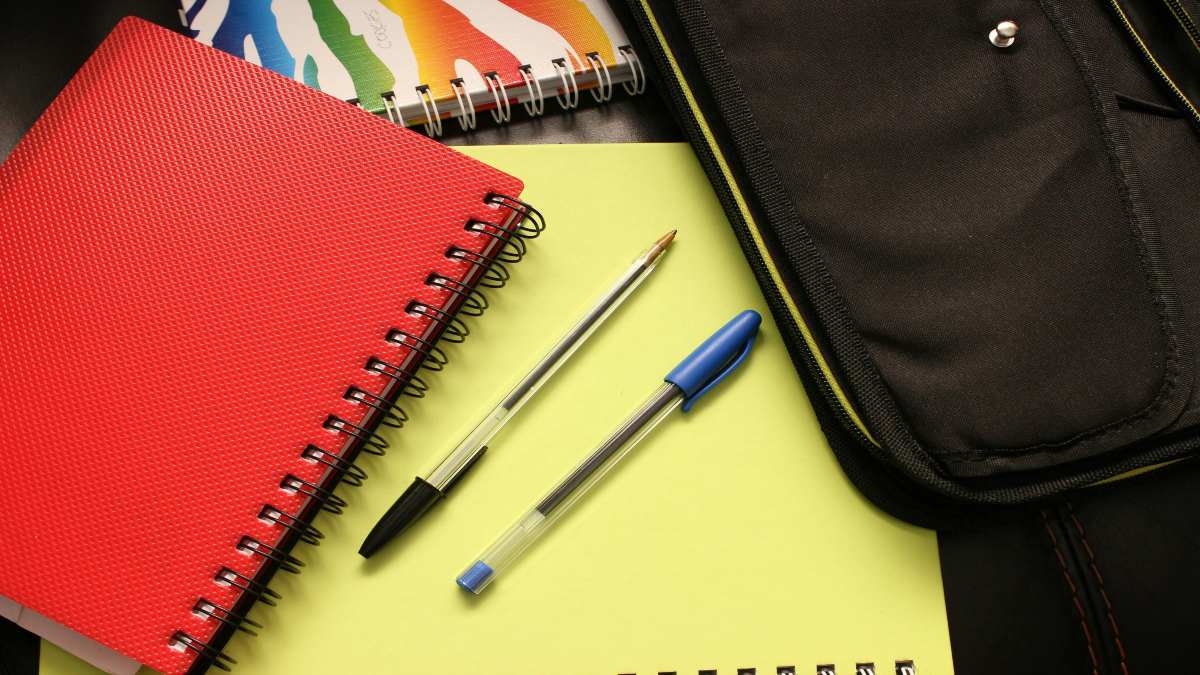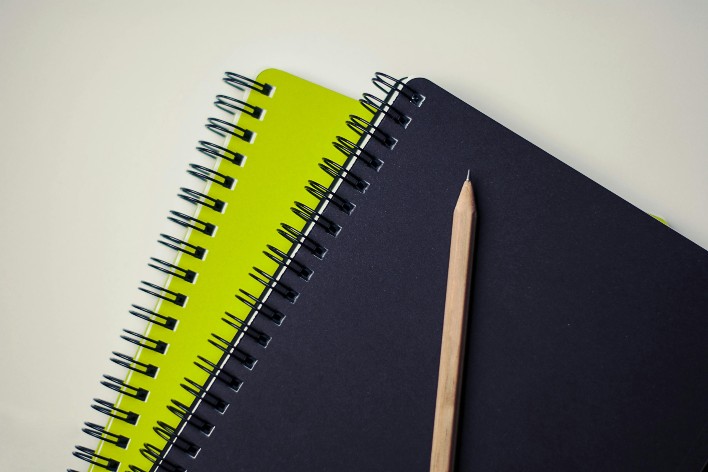Using Interactive Notebooks for Better Note-Taking and Retention

Hello, young adventurers! Are you ready to dive into the wonderful world of note-taking? We all know school can sometimes be very hard, and even trying to remember all that you learn there becomes kind of overwhelming. Guess what? There is a cool way to make note-taking fun and effective: interactive notebooks! In this blog, we will delve into just how these notebooks can assist you in improving your note-taking skills and remembering material learned while going through various note-taking methods. So, grab your pens, and let's get on!
What is Note-taking?
Clarify first what note-taking is before we advance into the details. Note-taking refers to writing down important information gathered from lectures, readings, or even discussions. This helps you capture important ideas and details, making it easier to study later.
Why Use Interactive Notebooks for Note Taking?
Interactive notebook use for note-taking will benefit you in the following ways :
Engagement: Whenever you are given room to be creative, you will listen and even have fun learning.
Retention: The more you actively engage your notes with yours, the more information you will retain.
Organization: You can come up with your system and organize the information for easy retrieval.
The Power of Different Note-taking Methods
Now, let's learn how you can most appropriately use your notes. There exist various techniques of note-taking which can be tried out. First, however, here are some of the most common note-taking strategies you may wish to try out:
1. Cornell Method
This method subdivides your page into three sections: cues, notes, and summary. Questions and summaries go to the smaller section, where you write most of your thoughts or whatever you are trying to remember in the bigger section. That does help solidify what you have learned!
2. Mind Mapping
A mind map is a form of graphical note-taking. It starts with an initial central idea and then expands in all directions from that point relating ideas, and it provides you with a visual view of how pieces of information connect, hence explaining your impression.
3. Outlining Technique
This technique is note-taking writing in an outline form, in which you usually apply the bullet points and indentation. Good for hierarchical information and breaks down complex problems into smaller ones so that they become manageable.
4. Charting Method
If you will be comparing topics that are related to each other, then this charting technique is very helpful. You make a table so that you will have side by side your information to make it easier to note the differences and similarities.
5. Sentence Method
In this process, you write each new item of information on a separate line. Useful if lectures are very fast-paced and you do not want to miss as much information.
The Techniques of Note-Taking
Now that we have covered a few different approaches to note-taking, let's talk about some good practices for note-taking that will enable you to get the most out of this skill:
1. Stay Organized
One of the greatest blessings of an interactive notebook is you can set it up in a way that makes sense to you. Here's how to do that:
Use Sections: Divide your notebook into sections for the subjects (for example, Math, Science, and History).
Make a Table of Contents: This will help you find the information in places.
2. Add Images
Images help us remember even more things. Here are a few suggestions:
Draw Diagrams: While you are reading about some new topic, draw a diagram.
Color Code: Put important points in boxes or use different colors for each topic so that it is more visible
3. Add Activity
Activity adds fun to your notebook and it becomes interesting. Try these ideas:
Cutting and Gluing Cut out pictures or words from the magazine cut-outs or printouts and glue them into your notebook.
Flaps and Foldables Create flaps that open up to show more information or fold paper into shapes that will be fun to write on.
4. Summarize and Reflect
Summarize what you learned at the end of each chapter. This helps to solidify the information in your memory. Write down any questions you have or areas you want to learn more about.
5. Shake it Up
Change the format in which you take notes. Try one of these formats:
Mind Maps This comes in handy when brainstorming ideas or connecting concepts.
Charts and Tables Use charts to organize information, especially for comparisons.
What Are Notes in Study?

You might ask, what are notes in school? Notes are written documents that help a student remember vital information. These can appear in different ways, such as bullet points or diagrams, and are a tremendous asset during test-taking and assignment completion time.
Interesting Things to Do with Your Interactive Notebook
To make note-taking even more exciting here are some fun things to do with your interactive notebook:
1. Create a Comic Strip
Take something you learned and make a comic strip. This is an awesome way to illustrate processes or events in fun and creative ways!
2. Cooperative Notes
Team up with a friend and create a note-taking section in your notebooks. You can learn from one another and discover new insights together!
3. Weekly Reflection Pages
Reflect once a week on what you have learned on a given page. Write down your favorite parts, what challenged you, and what you cannot wait to learn next.
4. Mini-Quizzes
Prepare mini questions for yourself at the end of every chapter for which you can quiz yourself. This not only tests your knowledge but also makes studying much more interactive!
Tips for Better Retention
Now that you know how to use an interactive notebook, let's go through some tips about how to retain what you learn better!
1. Review regularly
One of the very good ways to memorize something is to go through your notes a hundred times. Make specific time slots in your week to go through your interactive notebook and refresh your memories about what you've learned.
2. Teach Someone Else
Teaching is a good way to ensure that what you have learned is fixed in your brain. You can teach or explain it to somebody- maybe a friend, family member, or even your pet!
3. Flashcards
Flashcards are an effective tool to memorize. You can write a question or term on one side and the corresponding answer on the other. Quiz yourself or challenge a friend!
4. Attend to Class Engagements
Be an engaging participant in class discussions and activities. The more you interact with the material, the more you are going to retain it.
5. Make Connections
Try old stuff to make you feel good about it. Connective notes mean making connections between what you have learned before and the new stuff you are learning. Making connections helps you create a mental map of the concepts, hence easier to remember.
Benefits of Implementing Interactive Notebooks for Noting
The use of interactive notebooks for your note-taking has numerous benefits:
1. Engagement
You will be more prone to be engaged with the material when you make your notes interactive; this brings you closer to retention.
2. Creativity
Interactive Notebooks: Thus, students will be able to voice out their own and frequently brilliant opinions, thereby rendering learning more of a journey than a chore.
3. Personalization
You might want your notes in a form that would appeal to your learning style hence making it easier to retrieve information later.
Conclusion
Interactive notebooks are among the effective strategies to improve your note-taking skills and retention. Students must get acquainted with the different types of Note-taking. Learn hundreds of varieties of note-taking techniques and discover effective strategies for personal building of learning that make learning much more enjoyable and engaging. Then remember your notes should be neat and orderly. You should have visuals as illustrations. Review them often to get the most out of what you learned.
Buckle up, in other words, to revolutionize the face of your learning journey with interactive notebooks. Creativity is here, so the hour of organization and enjoyment has finally come! Happy note-taking, young scholars!
FAQs
What are some benefits of interactive notebooks?
Interactive Notebooks foster engagement, improve retention and personalize learning through creative expression.
What is interactive note-taking?
Interactive note-taking is the act of taking traditional notes and mingling them with other creative pieces such as drawings diagrams and foldable material to imprint learning.
When to use interactive notebooks?
In the classroom, these interactive notebooks can be used during a lesson, for homework, or in study time to structure and consolidate learning in any subject area.
What is the essence of note-taking?
The primary essence of note-taking is to catch and organize important information for better understanding and quick review and study in the future.
"Discover more exciting ways to make learning fun—explore our site for engaging resources and activities today!"
NCERT Solutions | Sample Papers | CBSE SYLLABUS| Calculators | Converters | Stories For Kids | Poems for kids| Learning Concepts I Practice Worksheets I Formulas | Blogs
How to Use Gamified Education to Motivate Middle School Learners
Admissions Open for 2025-26
CBSE Schools In Popular Cities
CBSE Schools in Bangalore
CBSE Schools in Mumbai
CBSE Schools in Pune
CBSE Schools in Hyderabad
CBSE Schools in Chennai
CBSE Schools in Gurgaon
CBSE Schools in Kolkata
CBSE Schools in Indore
CBSE Schools in Sonipat
CBSE Schools in Delhi
CBSE Schools in Rohtak
CBSE Schools in Bhopal
CBSE Schools in Aurangabad
CBSE Schools in Jabalpur
CBSE Schools in Jaipur
CBSE Schools in Jodhpur
CBSE Schools in Nagpur
CBSE Schools in Ahmednagar
CBSE School In Tumkur

